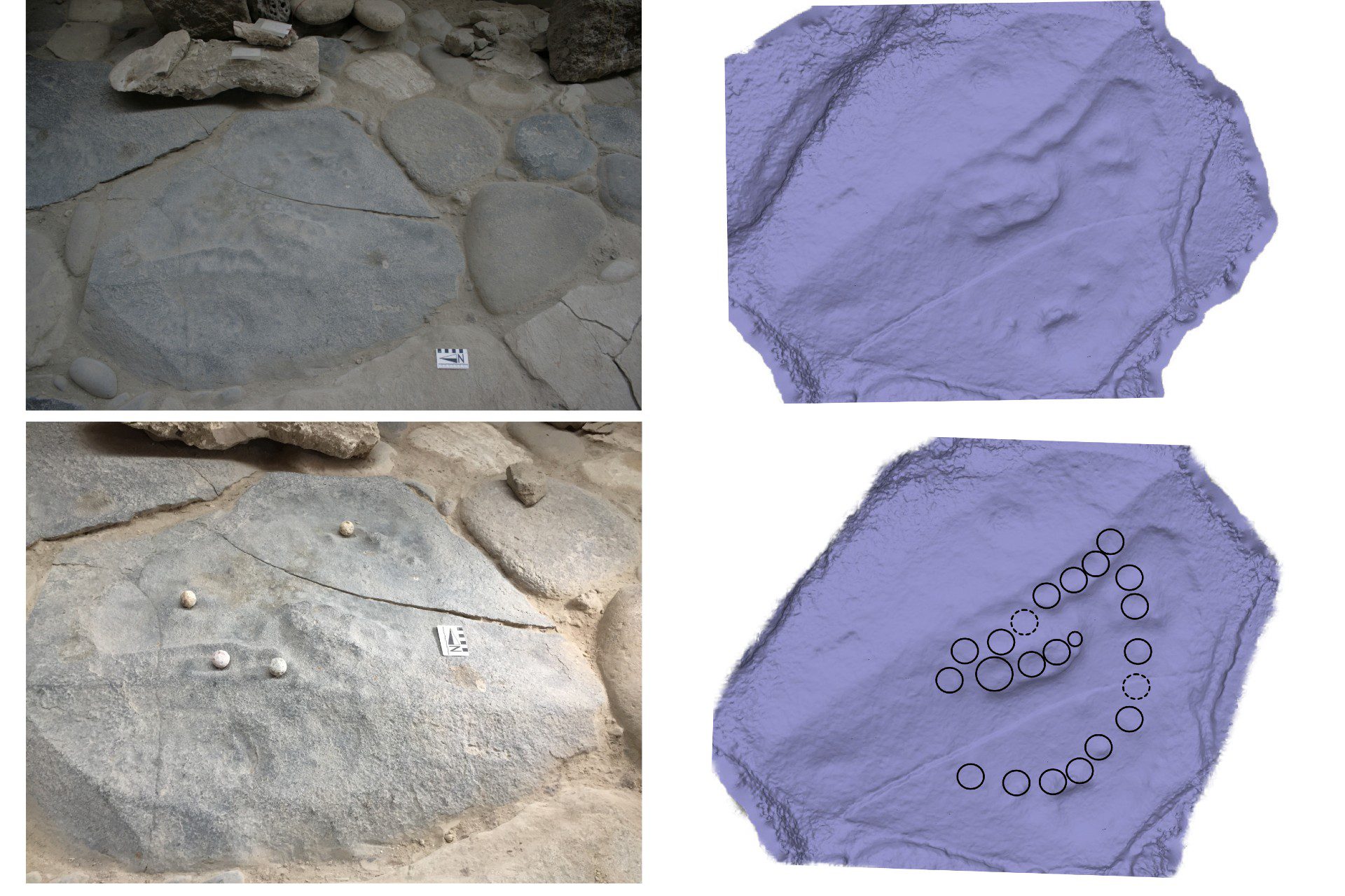When we think about our Bronze Age ancestors, it’s easy to imagine their lives being an endless loop of the four Fs: fighting, feeding, fleeing, and, uh, mating. What we tend to forget is that ancient people were, you know, people – not that different from you or us. They had besties; they liked to get dressed up and go out on the lash – and according to new research from the University of Bristol, they also liked getting together for game night now and then.
“Across the Bronze Age Aegean and Eastern Mediterranean, various small spherical lithic [stone] artefacts have been discovered,” explains a paper investigating the nearly 750 little balls found in the prehistoric town of Akrotiri, on the Greek island of Thera (also known as Santorini).
“The exact use of such artefacts remains a mystery,” the authors write, but “possible interpretations suggest that they are a form of counting system or counters for board games.”
These round stones have been found on many of the 6,000 Greek islands and isles strewn across the Aegean sea, but it’s at Akrotiri where the largest collection has been found. They come in various different sizes, colors, and materials, and for some time now have been the subject of debate as to what, exactly, they were used for.

Groups of spheres from Akrotiri. Image credit: Konstantinos Trimmis
So, back in the 70s, the prevailing idea was something that’s no doubt already been suggested in the comment section: that these stone balls were missiles – used as sling stones in early warfare or tossing balls in sports.
This hypothesis stayed popular for decades until, in the 21st century, other researchers pointed out something which you’d think would have been obvious: that a “ball” made from a rock probably wouldn’t be that much fun to use as a recreational projectile. “They are unlikely to have been used as tossing balls as they could easily harm the players if not caught,” the authors point out.
Meanwhile “the spheres are unlikely to have been sling stones,” they explain, “as all other examples from this period, and from later periods, are generally heavier than most of the spheres from Akrotiri and are more ovoid in shape.”
But if they weren’t for launching at other people, what could these stone spheres, not even the size of golf balls, be for? Well, one clue might be found in the many kernos – stone slabs found in Akrotiri and in settlements across the Aegean, which seem to have had shallow dents or cup marks worn into them.

The kernos (slab with cup marks) at the square of the House of the Benches and an interpretation of how the spheres could be associated. Image credit: Konstantinos Trimmis
Add to that the results of the research team’s machine learning algorithm, whose analysis of the sizes and shapes of the spheres showed that the balls fell into two ironically-sized groups – “one larger cluster that includes smaller spheres and one smaller cluster that includes the larger spheres,” the paper notes – and the researchers come to a natural conclusion.
“That the spheres fit two major clusters… supports the hypothesis that they were used as counters for a board game,” said Christianne Fernée, a postdoctoral researcher in Biological Anthropology and Data Science at the University of Bristol and lead author on the new paper, in a statement. “The spheres most [likely] have been collected to fit these clusters.”
If that’s the case – if these really are the playing pieces for a game of ancient chess or checkers – then the researchers have discovered more than just an explanation for a few hundred stone balls in the Mediterranean. If this is an ancient board game, then it’s one of the oldest on record, joining Ancient Egyptian pastimes such as Mehen and Senet in terms of record-breaking recreation.
“The social importance of the spheres, as indicated by the way they were deposited in specific cavities, further supports the idea of the spheres being part of a game that was played for social interaction,” said University of Bristol archeologist and co-author of the paper, Konstantinos Trimmis. “This [discovery] gives a new insight into the social interaction in the Bronze Age Aegean.”
The study is published in the Journal of Archaeological Science Reports.
Source Link: Mysterious Ancient Stone Spheres Have A Surprisingly Cute Explanation